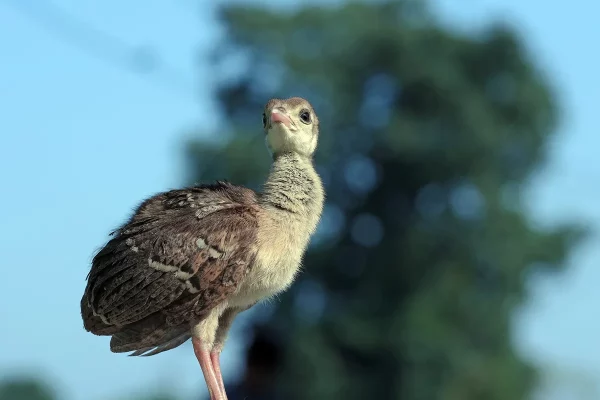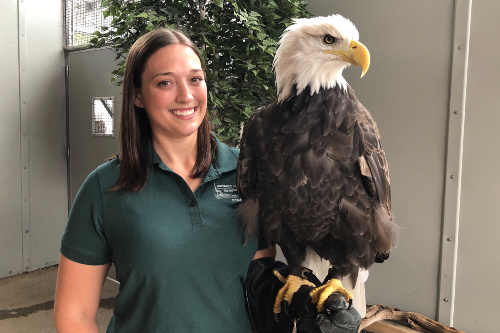It’s likely that you have seen birds sitting contentedly on high-voltage power wires, seemingly unharmed. How a bird can survive landing on one of these power lines, when they can power whole communities, seems to defy sense.
Despite the risky appearance, there are good scientific explanations for why birds that fly into electrical lines don’t be electrocuted.
Here’s the short response in case you’re pressed for time: Because they are not grounded, birds that fall into power wires risk electrocution because they do not complete an electrical circuit. Additionally, their feathers act as insulation against electric current.
The anatomy, physiology, and behavior of birds that shield them from electrocution when they come into touch with live electrical lines will all be covered in detail in this in-depth study.
Bird Feet Don’t Conduct Electricity Well
The low electrical conductivity of birds’ feet is one of the key reasons they don’t get electrocuted when they fall on power wires. There are several reasons for this.
Insulating, Thick Scales
Birds’ feet are covered in thick, insulating scales that shield them from electrical currents. Their bodies are protected from the electrical by these scales, which function as a barrier. To further lessen the chance of electrocution, the scales assist in reducing the amount of contact between the bird’s feet and the power line.
Minimal Tissue and Muscle
The lack of muscle and tissue in birds’ feet is another factor against electrocution. This indicates that the amount of material that the electrical current may go through is reduced. There is a much lower chance of electrocution since there is less material to conduct electricity.
A Circuit Is Not Completed by Bones
Furthermore, a bird’s foot anatomy contributes to its ability to resist electrocution. In contrast to people or other animals, a bird’s bones do not complete a circuit. This implies that an electrical current would not pass through the bird’s body even if it were to contact a grounded item with one foot and a power line with the other.
Despite the fact that birds are mostly safe near power lines, they might still be in danger if they come into contact with two power lines at once or with a grounded item.
In these situations, the bird may provide a channel for the electrical current to pass through, raising the possibility of electrocution.
You may visit Audubon or All regarding Birds for further information regarding electrical safety and bird behavior.
Feathers Offer Superior Insulation
Birds’ superior insulation from electricity wires is one of the key reasons they avoid electrocution when they land on them. The intricate network of barbs and barbules that make up feathers forms an air pocket layer that serves as an electrical insulator.
Feathers Oppose the Flow of Electricity
Feathers’ structure aids in preventing electricity from passing through a bird’s body. The barrier formed by the barbs and barbules keeps the bird’s body from coming into direct contact with the power line.
By forming a channel with high resistance to the electrical current, this barrier lowers the chance of electric shock.
Furthermore, keratin, a protein that is a poor electrical conductor, makes up feathers. This aids in preventing the bird’s body from conducting electricity.
Beneath their outer feathers birds have fluffy feathers
Beneath their outer feathers, birds also have a layer of downy, fluffy feathers. The extra layer of insulation that this down provides further obstructs the electrical current passage. The down feathers’ puffy shape produces more air pockets, which raises their electrical resistance.
It is challenging for electricity to go through the bird’s body because of the double layer of insulation that is created by the down and outer feathers together.
Waterproof Feathers with Preen Oil
Preen oil is a waxy substance produced by the uropygial gland, a gland found at the base of the tail of birds. During the preening process, birds apply this oil to their feathers, keeping them hydrated and healthy.
Preen oil’s ability to keep out water helps shield birds against electrocution. The preen oil in the bird’s feathers serves to resist moisture when it falls on a power line, keeping the feathers from becoming wet and conductive. This lowers the chance of electric shock even further.
It Is Not Grounded for Birds to Finish a Circuit
The fact that birds are not grounded to complete an electrical circuit is one of the key reasons they do not be electrocuted when they fall into power lines. A bird is effectively perching on a conductor when it settles on a power line.
Birds don’t provide the electrical current a route to the earth as people or other animals do.
There Is No Circuit Created by Perching
A bird only makes touch with one wire when it lands on a power line. There must be a full route from the power source to the ground for electricity to pass through a circuit and cause damage.
Perching on a power line does not create a circuit that would enable electricity to flow through a bird’s body since birds are not grounded.
It’s Not Enough to Just Touch One Wire
A bird touching two wires at the same time wouldn’t be sufficient to form a circuit. The electricity wires themselves aren’t full circuits, which is the cause. They don’t create a full loop; instead, they are designed to transport energy from the power source to its designated location.
There would thus be no way for electricity to pass through a bird’s body and finish a circuit, even if the bird managed to come into contact with two wires.
Rubber Sole Comparison
Thinking about a human wearing rubber shoes will help you comprehend why birds don’t get electrocuted when they fall on electricity wires. The rubber shoes serve as an insulator against electrical currents, much as the bird’s feathers and the surrounding air do the same, keeping electricity from passing through its body.
The bird may sit on electrical wires safely and without risk of electrocution thanks to its insulation.
Final Thoughts
In conclusion, because of their insulating feathers, delicate foot structure, and propensity to avoid completing electrical circuits when perching, birds may land on live power lines safely. Birds that land on cables that we know to be very electrified won’t be electrocuted, which is simply explained by taking into account the body’s inherent defenses against electricity.
Therefore, despite its seemingly unstable appearance, a bird sitting on a power wire is an illustration of how nature has managed to cohabit peacefully with contemporary human infrastructure.
The next time you see a bird sitting contentedly on thousands of volt electricity wires, you’ll comprehend the scientific rationale behind its apparent simplicity!


![Can Birds Have Heart Attacks? [Explained]](https://birdsology.com/wp-content/uploads/2024/01/14824.webp-600x400.webp)



